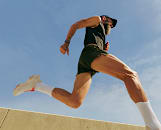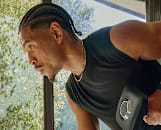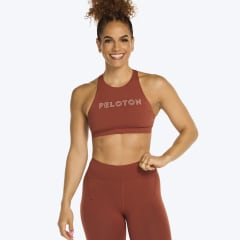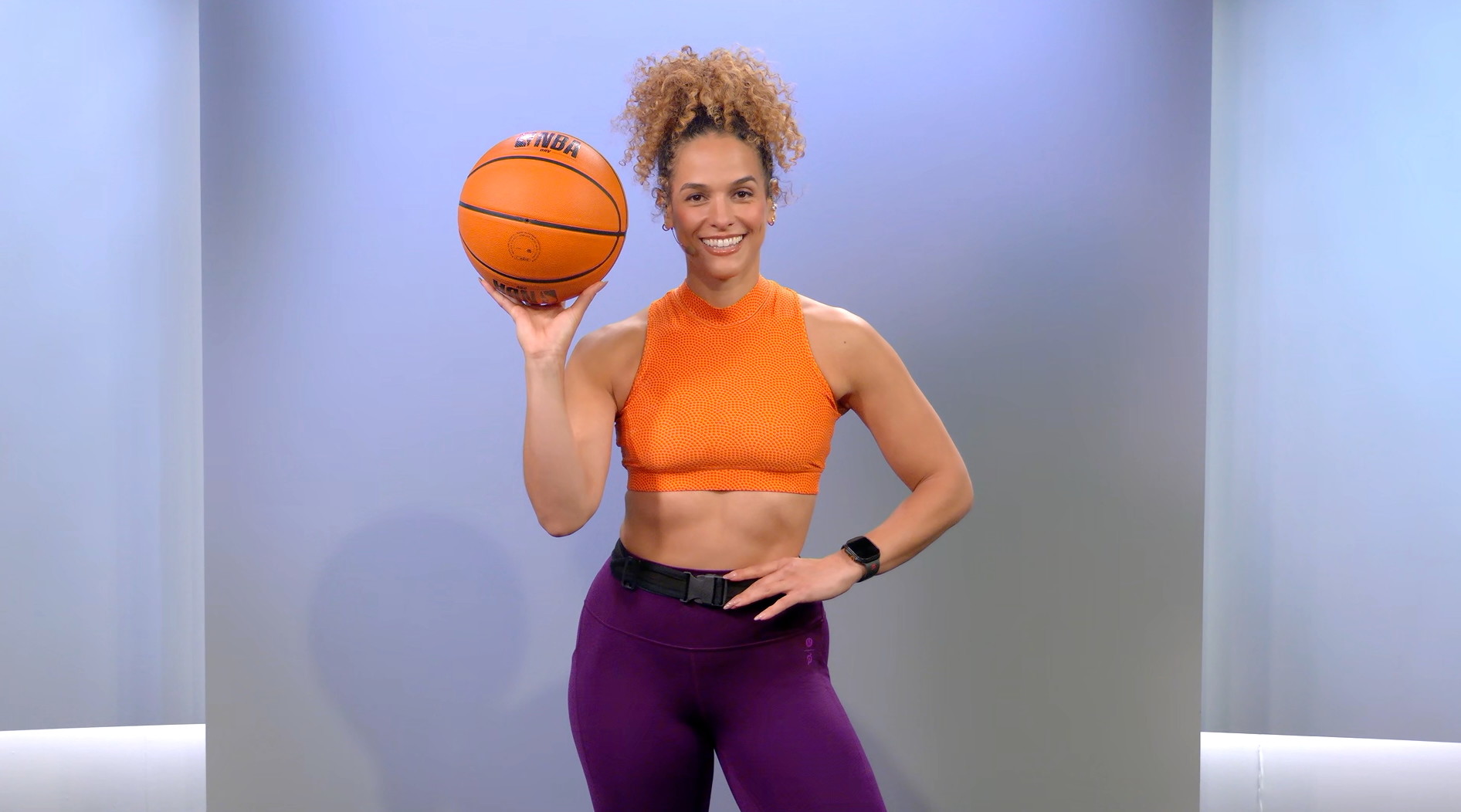
9 Strength Moves to Level Up Your Basketball Game
Want an edge on the court? These strength training moves will give it to you.
By Emily Laurence•
Why Strength Training Is Important for a Strong Basketball Game
9 Best Basketball Strength Training Exercises
Basketball Training Tips
How Often to Strength Train for Basketball
Takeaway
When it comes to having a competitive edge on the basketball court, you likely believe training comes down to two components: cardio and shooting. While it’s true that you aren’t going to get very far in basketball if your shooting skills are lacking or you get winded easily, there’s more to training than these two elements. One that many people overlook is strength training for basketball.
Discover more ways to reach your goals with Peloton
Need a game plan? Peloton instructor Jess Sims has you covered with a structured training program to follow. Her new Strength for Basketball program in the Peloton App is specifically designed to improve your game.
“I’m super excited about the Strength for Basketball program because I’ve played basketball my entire life and I really started to notice a huge difference in my game when I started to prioritize strength training,” Jess says.
What does strength training for basketball look like? Below, learn how strength work can improve your basketball skills, and get a taste of Jess’s favorite moves for preventing injury and honing your performance on the court.

Peloton App
Access thousands of classes with no equipment needed.
Why Strength Training Is Important for a Strong Basketball Game
“Strength training is super important in the game of basketball,” says Chris Brickley, a Peloton Creator Ambassador and trainer to many professional basketball players. It doesn’t matter whether you’re on offense or defense, he says; whatever position you play, strength training should be part of your training regimen.
Playing basketball requires you to perform a lot of quick and high-intensity movements, including accelerating and decelerating, abruptly changing direction, and jumping to block or shoot—all these actions require high levels of strength and neuromuscular power production.
“It’s all about who can be the lowest, who has the strongest core, and who can be the strongest. If you’re weak, you’re always going to get outplayed by your defender, which means you’re not going to be as good as you should be,” Brickley says. “So strength is huge.”
A small 2024 study on young male basketball players, for example, found that both core stability training and traditional strength training can improve dynamic balance and agility, which can contribute to better athletic performance. “The stronger you get, the more power you have, the more control over your body you have, and the more awareness of your body you have,” Jess explains.
When it comes to strength training for basketball, Brickley says there are certain muscle groups that you should pay particular attention to: “The most important muscle for the basketball player is your core. That’s not just your abs. Your core [includes] everything surrounding your abs in the back and front as well as the hips,” he explains.
In addition to building core strength, Jess also recommends focusing on your quads, hamstrings, calves, and shoulders, as well as ankle mobility and hip mobility. “You need your entire body for basketball,” she says.
9 Best Basketball Strength Training Exercises
The following moves build the strength and skills that’ll benefit you on the court—and are all featured in Jess’s Strength for Basketball classes in the Peloton App.
One pro tip to keep in mind during many of these moves, especially the single-leg ones: “Think about knee tracking,” Jess says. “A lot of times, especially when you’re landing, you need to land with a soft bend in the knees so that your knee is tracking out instead of going in. That’s when injury can happen, if your quad isn’t strong enough to make sure that you are tracking the knee outward.” Keep an eye on where you knees are tracking during these squats, lunges, and plyometric moves.
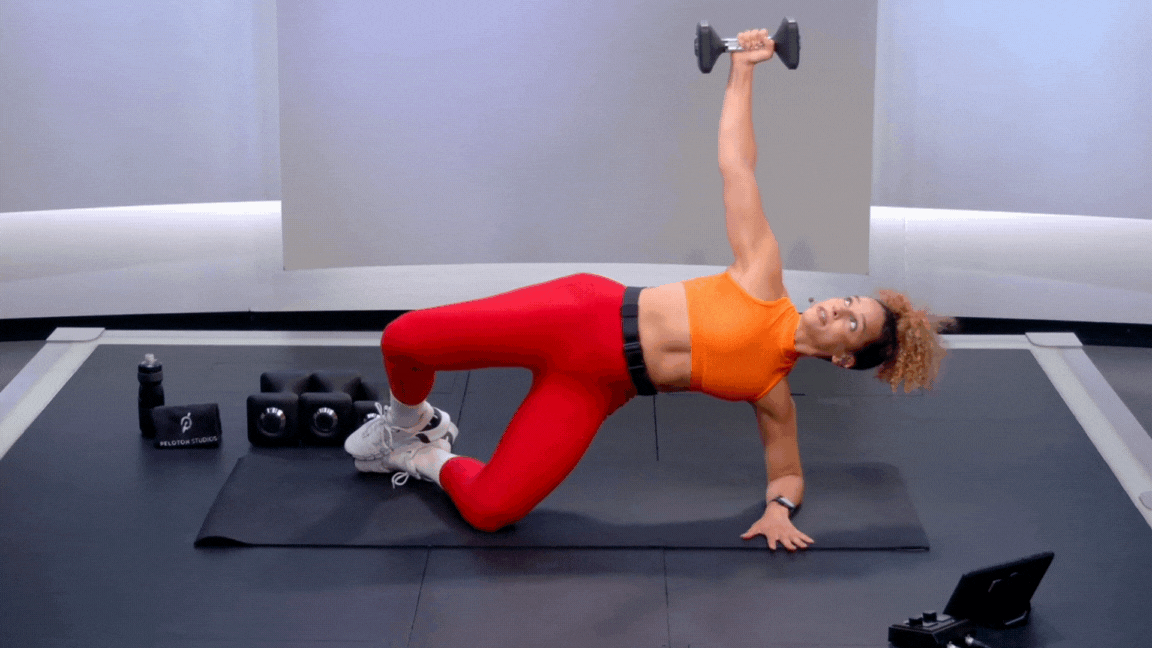
1. Bridging Clamshell with Dumbbell Reach
Jess highly favors this compound movement due to its effectiveness in both glute activation and trunk rotation. She recommends doing this move first with just your body weight, and grabbing a light dumbbell when you’ve got the form down pat.
Start lying on the floor on your left side, your torso propped up on your left forearm, with your knees bent and stacked. Your feet should be about in line with your hips. Place a dumbbell on the floor in front of you.
Grab the dumbbell with your right hand and lift your hips off the floor. This is your starting position.
Keeping your hips lifted and core engaged, reach the dumbbell under your torso and behind you.
Then uncurl and reach the dumbbell toward the ceiling, keeping the weight close to your body as you do so, and lifting the right knee so your leg is in an open clamshell position. At the top of the movement, the dumbbell should be stacked directly over your right shoulder with the arm straight but not locked, and your hips should be squared, facing forward.
Reverse the movement, lowering your right knee and reaching the dumbbell underneath your body to begin the next rep.
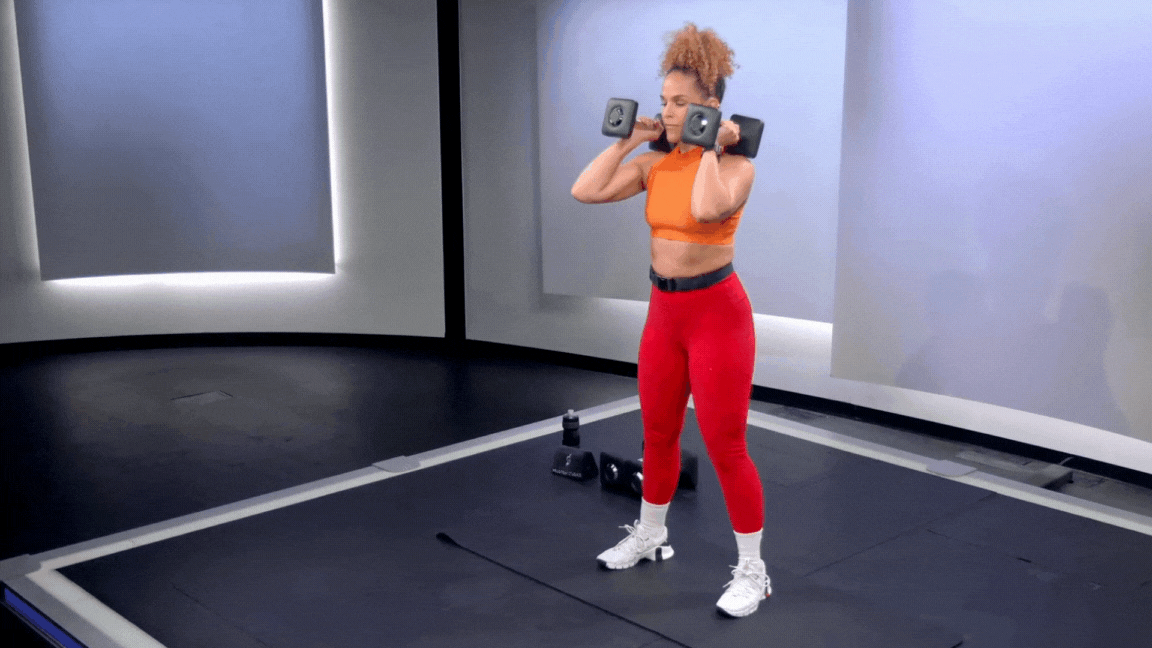
2. Eccentric Dumbbell Squat to Calf Raise
Research shows that training eccentric movements—the portion of an exercise when a muscle is contracting while lengthening—can help improve performance and prevent injury among athletes. This squat variation combines a slow and controlled eccentric motion with an explosive concentric movement (when the muscle contracts while shortening) to help you develop power and agility.
Start standing with your feet wider than hip-width distance apart and holding a dumbbell in each hand, racked above your shoulders.
With your core engaged, inhale as you slowly sit your hips back and bend your knees to lower into a squat, taking four seconds to do so.
Pause at the bottom of the squat, when your legs are parallel to the floor.
Then exhale as you explosively press into the floor to straighten your legs and stand up, coming up onto the balls of your feet with your heels lifted.
Lower your heels to the floor to return to start. That’s one rep.
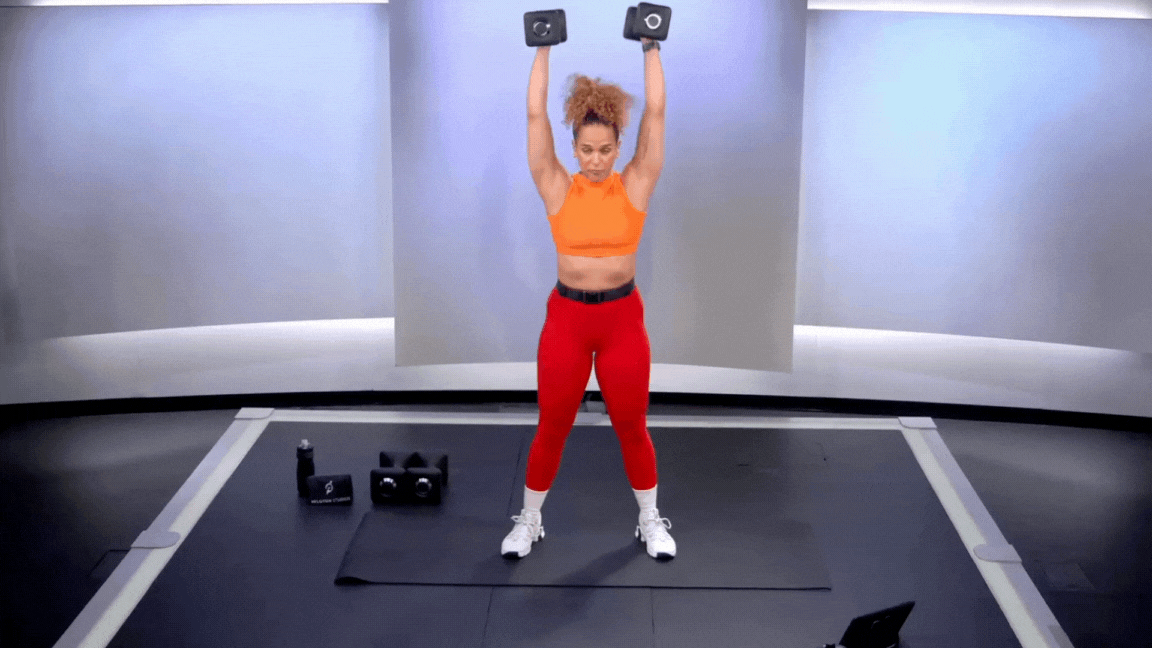
3. Push Press
This functional strength move trains you to transfer force from your lower to upper body, and strengthens your shoulders for shooting and passing.
Start standing with your feet wider than hip-width distance apart and holding a dumbbell in each hand, racked above your shoulders.
With your core engaged, inhale and sit your hips back, bending your knees a few inches to come into a quarter squat.
Exhale and press into your feet to explode upward, lifting your heels off the floor and straightening your legs. Use the momentum to press the dumbbells overhead, so they’re directly above your shoulders.
Lower the dumbbells back to shoulder height and immediately bend your knees to begin the next rep.
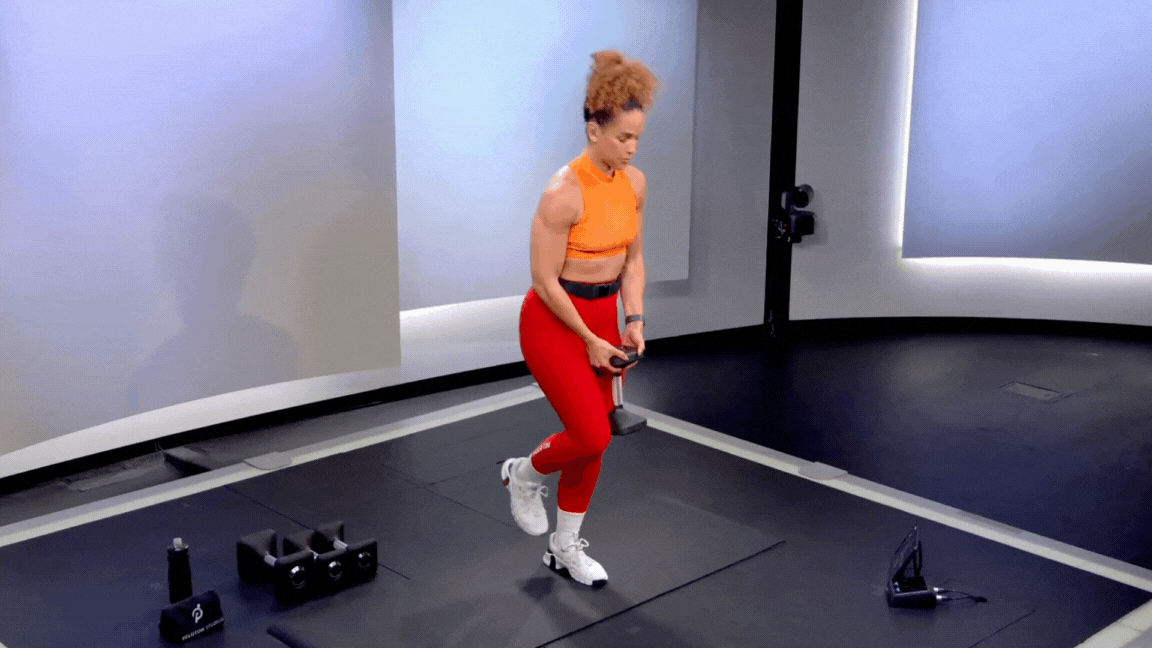
4. Dumbbell Single-Leg Deadlift
Single-leg work is very important when training basketball, Jess says, which is why she included plenty of those moves (including several variations of single-leg deadlifts) in her Strength for Basketball classes.
Start standing with your feet together, holding a single heavy dumbbell vertically in both hands in front of your thighs. Shift your weight onto your left leg and lift your right leg slightly behind you so your toes are barely touching the ground.
Maintaining a slight bend in the left leg, inhale and kick your right leg backward and hinge your torso forward to lower the dumbbell along the front of your left leg.
Tap the bottom of the dumbbell onto your left toes. Keep your hips square to the floor.
Exhale and lower your right leg, lifting your torso and the dumbbell to return to the starting position.
Tap your right toes to the floor or, for a challenge, hover them off the floor before you begin the next rep.
Do the same number of reps on both sides.
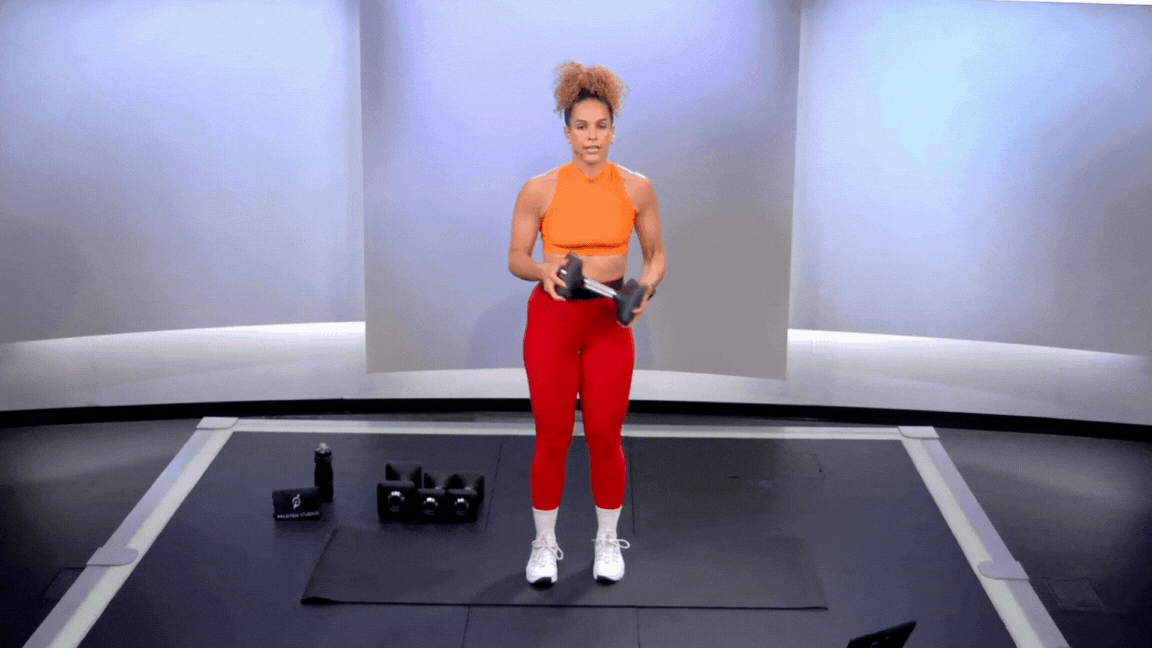
5. Reverse Lunge Woodchop
This complex strength exercise trains rotation and anti-rotation, both core skills that you’ll put to use on the basketball court as you pivot, pass, and guard.
Start standing with your feet together, holding the ends of a dumbbell with both hands in front of your left hip.
Take a big step backward with the right foot to lower into a reverse lunge, reaching the dumbbell to the outside of your left hip while keeping your shoulders square to the front. Pause when your front knee is bent at 90 degrees.
Press into the left foot and exhale as you straighten your left leg to stand up, simultaneously lifting the dumbbell diagonally across your body so it stops above your right shoulder when you’re standing up straight. Try to keep your shoulders square to the front: “You’re not twisting, you’re resisting the twist,” Jess says.
Pause for one second, then step back with the right foot and lower the dumbbell across your body to begin the next rep.
Do the same number of reps on both sides.
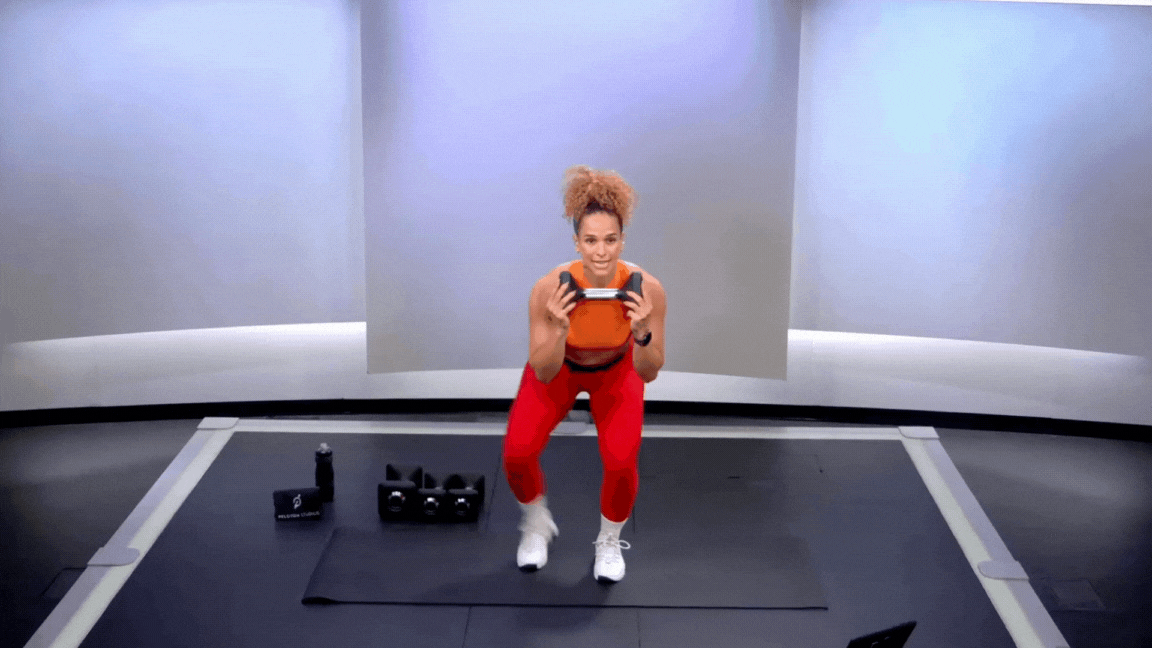
6. Lateral Step-Out
Like a strength version of lateral shuffle drills, this move builds strength in one leg at a time while also working your agility on the other side.
Start standing with your feet together, holding a dumbbell horizontally in front of your chest in both hands. Sit your hips back and bend your knees to lower into a half squat. Shift all your weight into the left leg.
Maintaining this position and keeping your core engaged, step the right foot out to the side, then immediately back in.
Repeat for 30 seconds, then repeat on the other side.
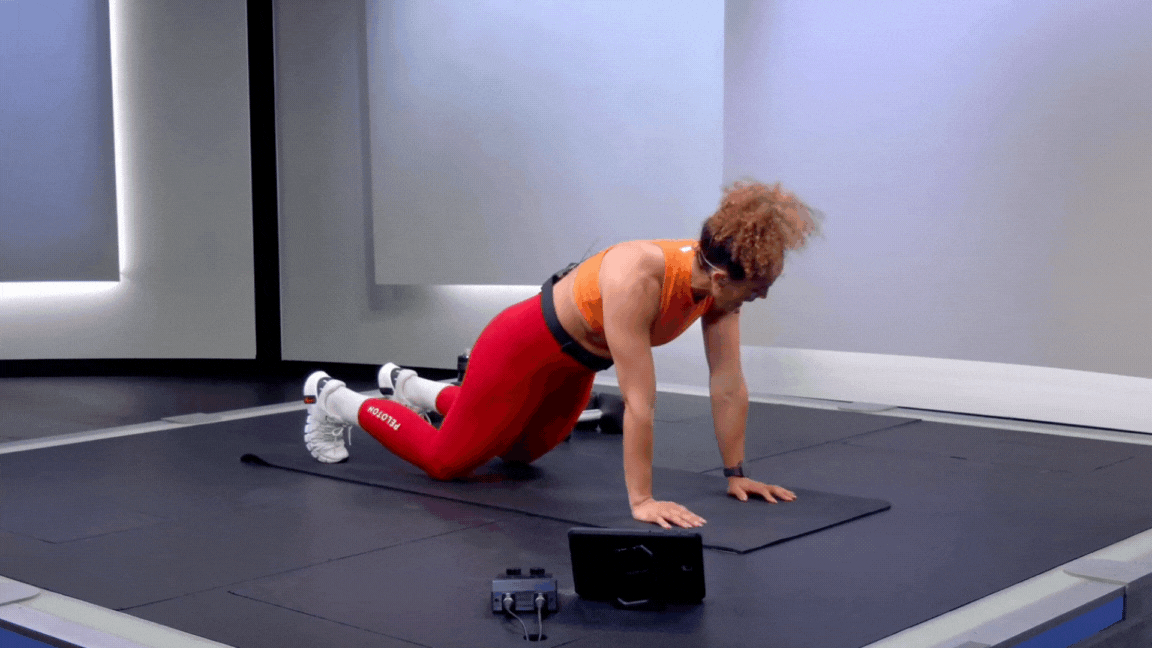
7. Push-Up
Push-ups build strength in your chest and triceps for strong passes while also drilling core stability. If necessary, modify by lowering your knees to the floor to maintain proper push-up form.
Start in a high plank position with your feet hip-width distance apart and your hands underneath your shoulders or slightly wider. Engage your core to form a straight line from your head to your ankles.
Bend your elbows backward at a diagonal to lower your body toward the floor. Make sure your body moves in unison, with your hips and shoulders lowering simultaneously.
Lower as far as you can while keeping your body in one straight line.
Pause at the bottom. Then, press through your palms to straighten your arms, returning to the starting position.
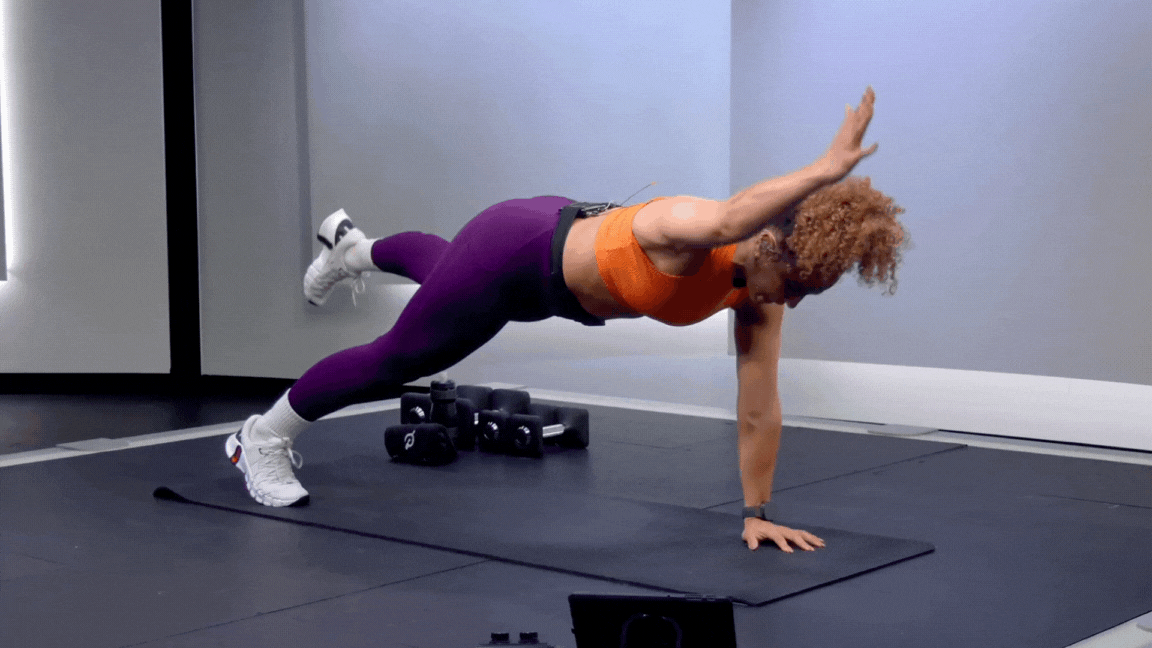
8. Plank Bird Dog
Contralateral work (which involves the coordinated action of opposite sides of the body) is super important in basketball, Jess says—and bird dog is a prime example of it in action. Scale this to your knees if you need to, she says.
Start in a high plank position with your feet slightly wider than hip-width distance apart and your hands on the floor directly underneath your shoulders. Your body should form a straight line from your head to your heels.
Maintaining a strong plank position, simultaneously lift your right foot and left arm off the floor, extending them long at shoulder and hip height. Try not to let your body twist or tilt in either direction.
Hold for one second, then lower them back to the floor with control. Repeat, lifting the opposite arm and leg.
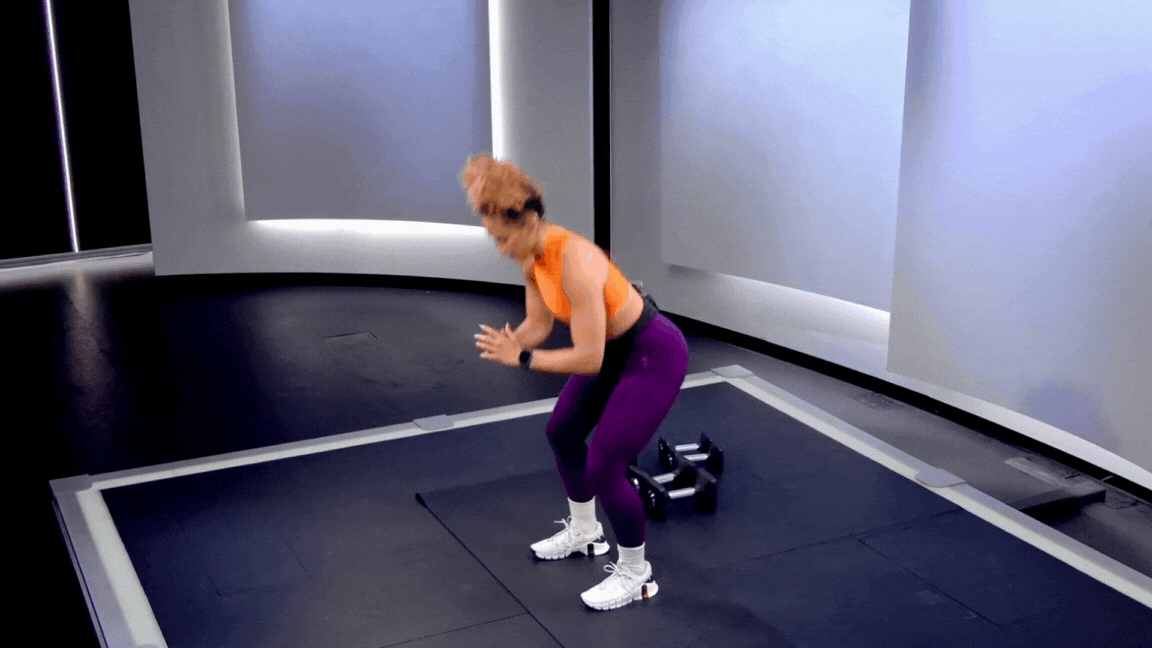
9. Bilateral Jump to Unilateral Landing
This move is one of Jess’s favorites in the Strength for Basketball program because of its ability to help prevent injuries. “When you’re going up for a shot, a lot of times it’s off one foot,” she explains. “Or you might get fouled hard and you need to be able to land on one foot. You want your body to be able to react to those types of situations.” As she mentions above, keep an eye on where your knees are tracking when you land; you want them to be directly above your ankles and feet, or slightly out to the side, but not caving inward.
Start standing with your feet wider than hip-width distance apart.
Sit your hips back and bend your knees into a half squat, then explosively press into your feet and straighten your legs and hips to jump off the floor.
Land softly on the left foot, bending your knee on impact to cushion the landing, and hovering the right foot off the floor.
Hold the landing position for one second, then place your right foot on the floor to return to the starting position.
Basketball Training Tips
Don’t Discount Cardio
While integrating the basketball strength training exercises above can go a long way in improving your skills on the court, it’s certainly not all your training should entail. Brickley says regular cardio is also key for basketball training.
For cardio, Brickley recommends both treadmill workouts and jump roping. “I do 1,000 jump ropes a day,” he says. “With jump roping, you’re constantly working on your hand quickness, calves, and your core, which translates directly to the basketball court. It also keeps you light on your feet.”
Train Your Fast-Twitch Fibers
To be a successful basketball player, Brickley says it’s important to be both explosive and powerful, which requires fast-twitch muscle fibers. Fast-twitch muscle fibers create short, powerful contractions, which are evident when sprinting down the basketball court and jumping to take a shot. If you want to move quickly, you need to train these muscle fibers, which we naturally lose as we age. Some effective ways to train your fast-twitch fibers include lifting moderate to heavy weights with speed, lifting light weights quickly, performing plyometric exercises such as squat jumps and burpees, or engaging in cardio sprint intervals.
Add Mobility Work
In addition to strength and cardio, you also want to work on mobility, which will allow you to move freely and efficiently on the court. “Mobility is working the end range of motion, and that’s really important,” Jess says. A 15-minute Mobility for Basketball class is included in the program, which you can do on a strength training, practice, or game day.
How Often to Strength Train for Basketball
“Of course, off-season strength training is going to look very different than in-season strength training,” Jess says. “But you don't want to lose your strength training routine, even when you’re in season.”
If you’re totally new to strength training, Brickley recommends starting with one day a week. (And, yes, you can expect to feel sore the next day.) Over time, he advises working up to strength training two days a week, and then increasing it to three or four days a week.
You’ll want to keep your volume (how much you’re strength training, as measured by sets, reps, and weight lifting) and intensity (how hard you’re training) in check based on what your practices and games look like at the given moment. “If you’re having double sessions of practice, for example, you’re not going to lift crazy heavy,” Jess says. “But there’s actually a lot of research around this and a lot of coaches that have players do a light lift before and/or after a game because it’s really good for your muscle mass retention.” In fact, she designed the 20-minute Strength for Basketball class specifically to be a strength add-on to a lighter practice or game day.
Takeaway
Cardio, shooting skills, and strength training are all important for upping your basketball skills, improving athletic performance, and helping to prevent injury. What you do off the court will impact what you can do on it. If you’re not sure where to start with basketball strength training, try Jess’s Strength for Basketball program (or any of the many other strength workouts), available on the Peloton App.
This content is for informational and educational purposes only and does not constitute individualized advice. It is not intended to replace professional medical evaluation, diagnosis, or treatment. Seek the advice of your physician for questions you may have regarding your health or a medical condition. If you are having a medical emergency, call your physician or 911 immediately.
Build full-body strength
Enter your email to get articles, instructor tips, and updates from Peloton sent to your inbox.
By providing your email address, you agree to receive marketing communications from Peloton.
For more about how we use your information, see our Privacy Policy.

